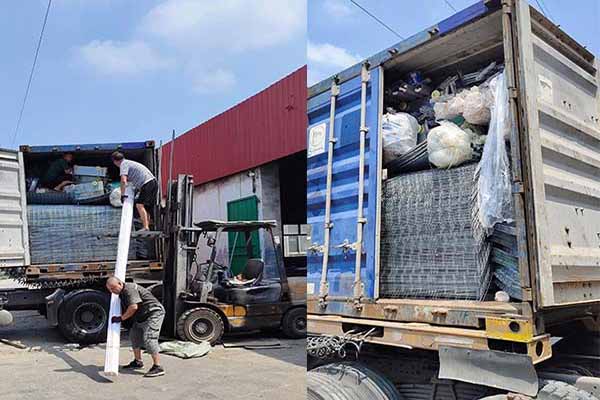Optimizing Egg Production with the 30,000 Chicken Cage System
Time : 2025-06-27
The 30,000 Chicken Cage System for egg production is a state-of-the-art solution designed to maximize efficiency and output in commercial poultry farming. This article delves into the intricacies of this system, providing an in-depth look at its design, functionality, and the benefits it offers to poultry farmers.
Introduction to the 30,000 Chicken Cage System
The 30,000 Chicken Cage System is a sophisticated arrangement that houses a large number of hens in a confined space, specifically designed for egg production. This system is favored for its ability to accommodate a high density of birds, ensuring consistent egg yield and minimal waste.
Design and Layout
Cage Structure
The cages are constructed from high-quality, durable materials that can withstand the rigors of intensive farming. Each cage is designed to house up to 10 hens, providing ample space for movement and comfortable nesting.
Automated Feeding and Watering
The system includes automated feeding and watering systems, which eliminate the need for manual intervention. The feeding system ensures that each hen receives the correct amount of feed, while the water system maintains a consistent supply of fresh water.
Waste Management
Efficient waste management is crucial in maintaining a healthy environment for the chickens. The system features a waste collection system that automatically removes droppings, reducing the risk of disease and minimizing odor.
Functionality and Efficiency
Temperature Control
Maintaining an optimal temperature is essential for egg production. The system is equipped with advanced temperature control mechanisms that adapt to changing environmental conditions, ensuring that the hens remain comfortable and productive.
Lighting Schedule
A carefully managed lighting schedule is crucial for regulating the hens’ egg-laying cycle. The system allows for precise control over the lighting, simulating natural day lengths to maximize egg production.
Health Monitoring
Health monitoring is integrated into the system, with automated sensors that track the hens’ vital signs. This proactive approach allows for early detection and treatment of any health issues, minimizing losses and maintaining high production levels.
Benefits of the 30,000 Chicken Cage System
Increased Egg Production
The system is designed to optimize egg production, with a focus on maximizing the number of eggs laid per hen per day. This results in higher yields for the farmer, leading to increased profitability.
Reduced Labor Costs
The automated nature of the system significantly reduces labor costs. With minimal manual intervention required, farmers can allocate their resources more efficiently.
Improved Animal Welfare
The cage design takes into account the comfort and well-being of the hens. The space provided in each cage allows for natural behavior and minimizes stress, contributing to overall animal welfare.
Enhanced Hygiene
The waste management system ensures a cleaner environment, reducing the risk of disease outbreaks and maintaining high hygiene standards.
Maintenance and Upkeep
Regular maintenance is crucial for the longevity and efficiency of the 30,000 Chicken Cage System. Routine checks and cleaning are essential to prevent equipment failures and ensure optimal performance.
Implementation and Integration
Implementing the 30,000 Chicken Cage System requires careful planning and integration into existing farming operations. The system can be tailored to fit various farm sizes and requirements, providing a flexible solution for poultry farmers.
Conclusion
The 30,000 Chicken Cage System for egg production represents a significant advancement in commercial poultry farming. Its innovative design, efficient functionality, and numerous benefits make it an attractive option for farmers looking to increase their egg production while maintaining high standards of animal welfare and environmental sustainability.












